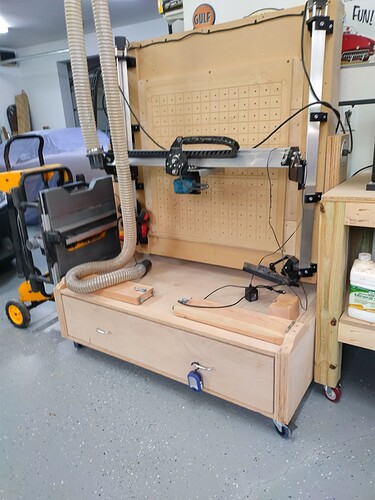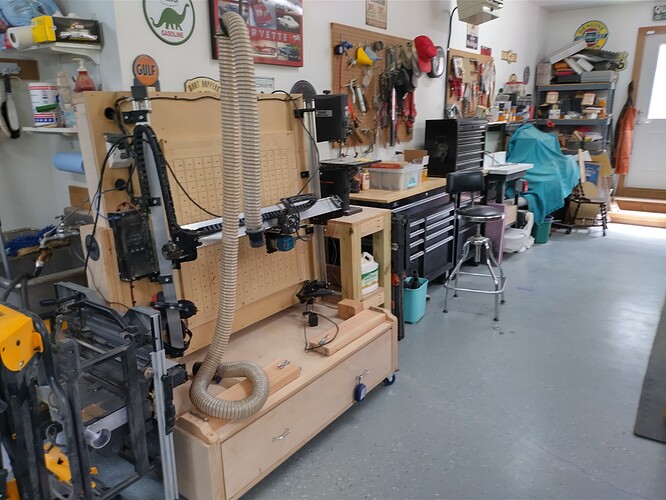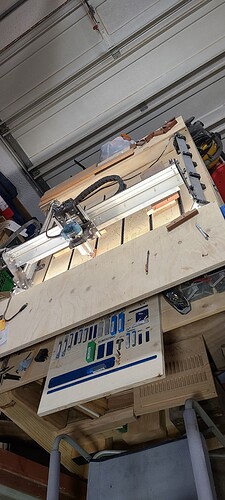Not trying to be a thorn, but that resolution doesn’t matter if the precision and accuracy aren’t there.
Just noticed your hobbies, I build amps, great hobby
I just realized you were asking me about the top size. I bought a 49x97 MDF sheet. I cut 48x48 for the table. I then cut strips in the 49x49 of (1) 5.5" and (5) 6" for the spoilboard slats. I used the entire leftover piece to overlap the controller side of the table to get me a little more room. My final top dimension is 49 x 52 7/8 . Obviously, this width includes the T rail widths.
Jim
a little more breathing room than I ended up with.
Where do you place your computer? I wish I had included a platform for mine. I may add that later.
I also may look at improving the lighting on the work surface.
Jim
I repurposed an old rolling tool box to hold my computer and extras into. My table ended up with just enough room to house machine
slide out door beneath the top
Do you have a picture?
BTW, I added an outlet with split circuits. One is unswitched and one is switched by Solid State Relay driven by control board for spindle power.
There used to be a table category, can’t seem to find it now.
Here is what my table looks like vertical
I also have a small hd monitor you can see on the top right corner, so I can run it with the laptop drawer closed, wireless mouse makes running files easy.
Very nice. I can see you put lots of work and thought into your table.
Good job,
Jim
I was thinking of building a table like yours do you have any plans for it. Thanks in advance
Hi Lifter, welcome to the forum. Sorry, I didn’t document the build.
Not a problem thanks anyway
I included a laptop space on my one side and put shelving for wood scraps on the other end. Here is my mostly cleaned table 20220101_104228|690x310



